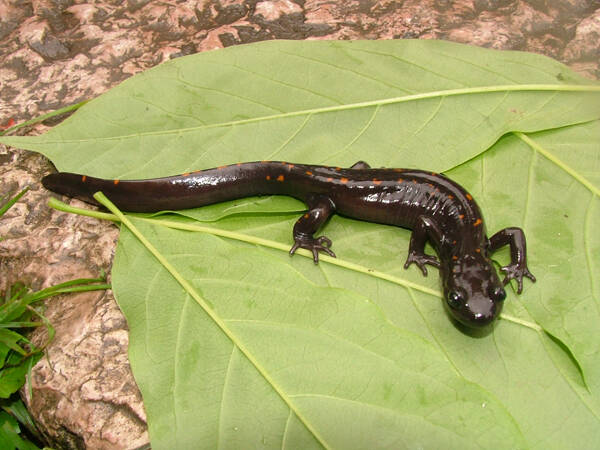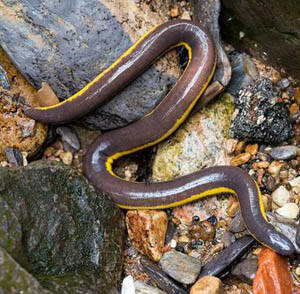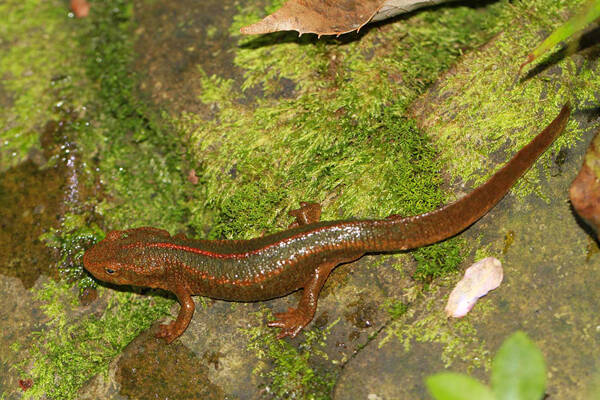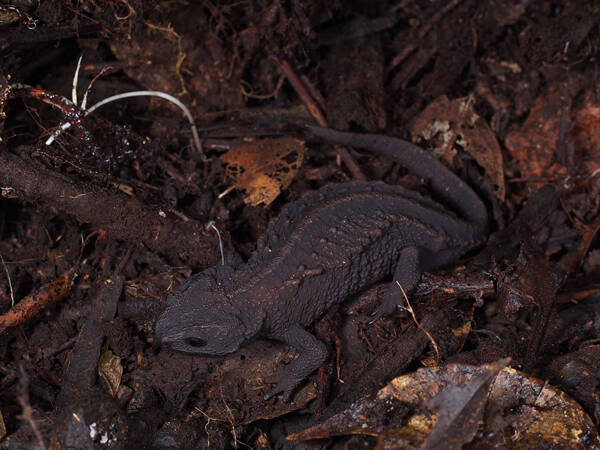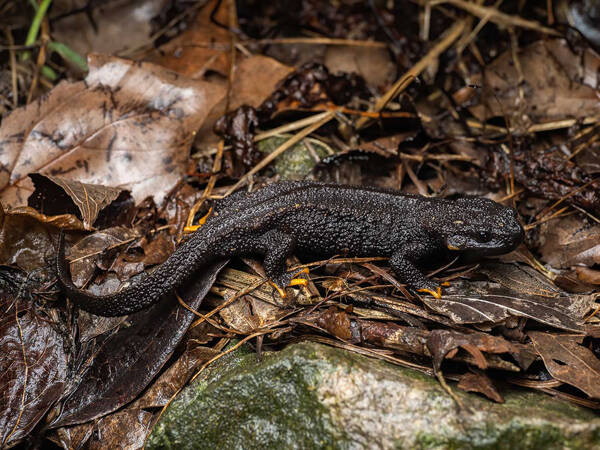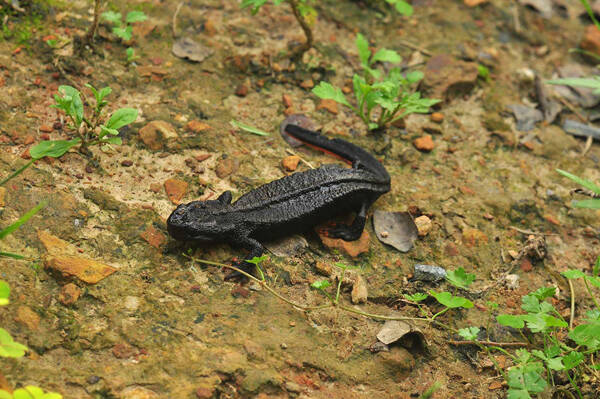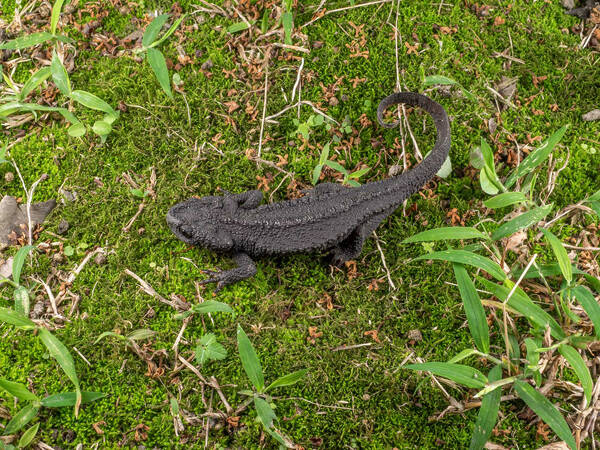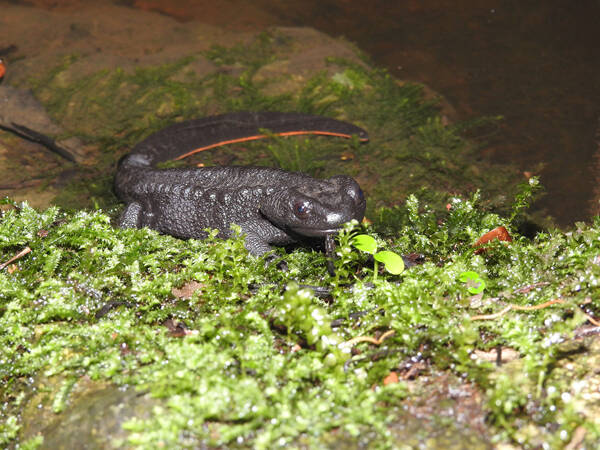Pseudohynobius kuankuoshuiensis
IUCN
LCBasic Information
Scientific classification
- name:Pseudohynobius kuankuoshuiensis
- Scientific Name:Pseudohynobius kuankuoshuiensis
- Outline:Urodela
- Family:Caudata Hynobiidae Pseudohynobiidae
Vital signs
- length:16-18mm
- Weight:
- lifetime:
Feature
The whole body is engraved with dark colors.
Distribution and Habitat
Endemic to China, distributed in Guizhou (Suiyang).
Lives in mountainous areas with an altitude of 1350-1500m, with the main vegetation being shrubs, broad-leaved trees, tea trees and grass. It lives on land during the non-breeding period, mostly in cool and humid places. Juveniles live in the backwaters of small mountain streams.
Appearance
The head is flat and oval; the snout is rounded and protrudes from the lower lip, without lip folds; there is a premaxillary fontanelle, and the vomerine tooth row is V-shaped. The trunk is nearly cylindrical, slightly flattened dorsally and ventrally; the tail dorsal fin fold is weak, the last section is laterally flattened and gradually narrow, and the end is blunt. The entire back is purple-brown, with earthy yellow round spots on it; the ventral surface is lighter in color.
Details
The broadwater salamander is a tailed amphibian of the family Hynobiidae and the genus Hynobiidae. It is similar to the yellow-spotted Hynobiidae, but the dorsal patches of this species are nearly circular, and the head length is about 1.55 times the head width.
This salamander lives in higher mountainous areas with an altitude of 1350 to 1500 meters. The main vegetation is shrubs, tree forests, tea bushes and grass. Adult salamanders live on land away from water during the non-breeding season, mostly living in places with lush vegetation, overgrown weeds, thick layers of dead branches and fallen leaves on the surface, and cool and humid places. The salamander was collected in April and August on the shady slopes of the forest farm and under the broad-leaved forests on the top of the mountain (Wu Lu et al., 1986; Xu Ning et al., 2007). The juveniles live in the backwaters of small mountain streams. The creek is about 1 meter wide, and the deepest water is generally no more than 40 cm. The water flow is gentle and clear. There are sand and gravel or fallen leaves deposited on the bottom of the water. There are dense shrubs, weeds and tea trees on both sides of the creek. In 1982, the juveniles were found in a spring pond. The pond was about 5 meters deep and 50 to 100 cm deep. The water plants in the pond were sparse, and the shore was covered with tea trees and weeds.
Listed in the second level of the "List of National Key Protected Wildlife in China".
